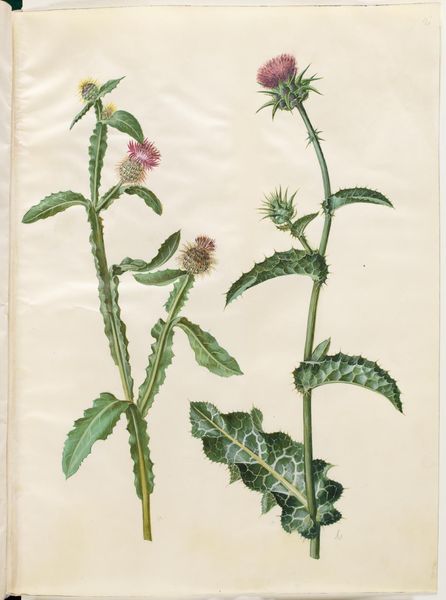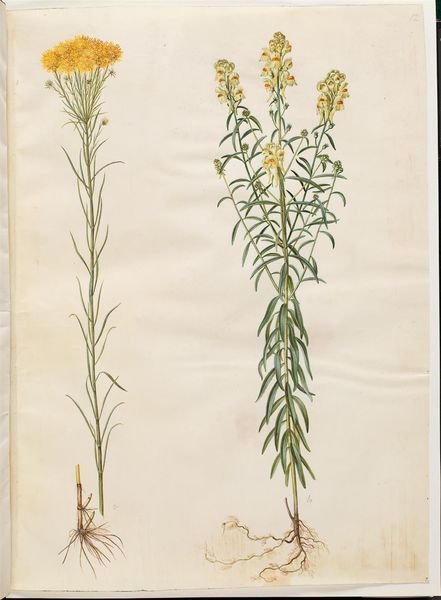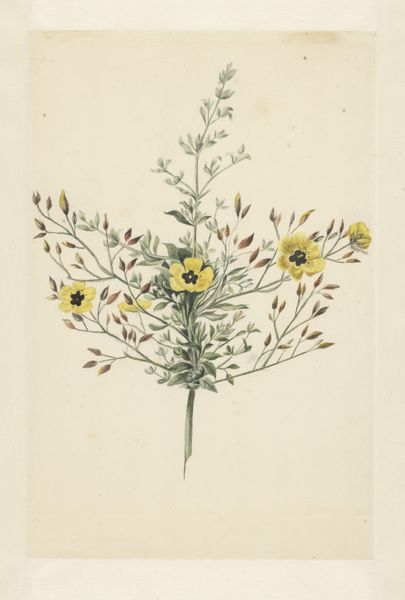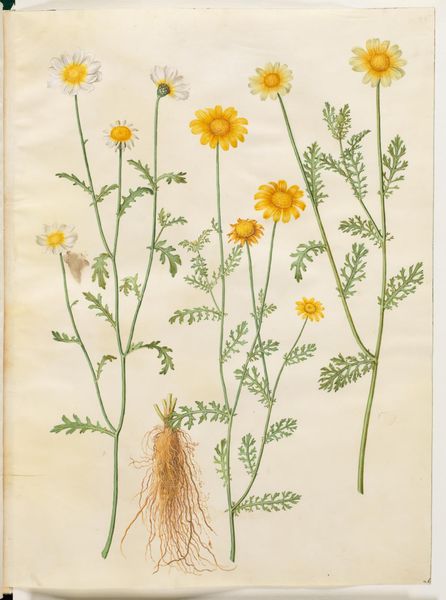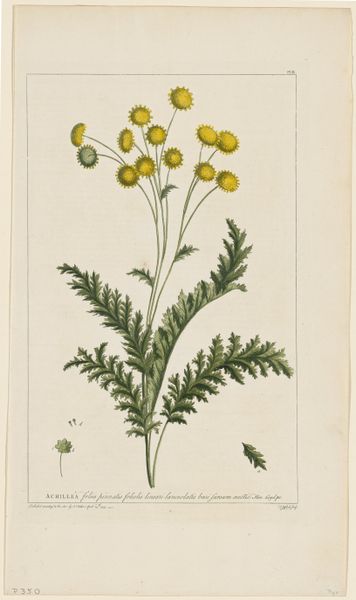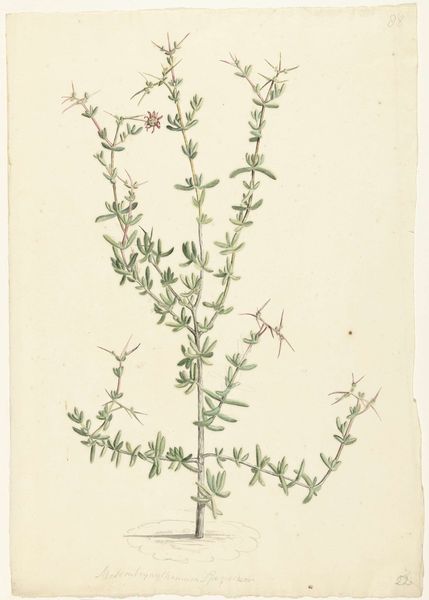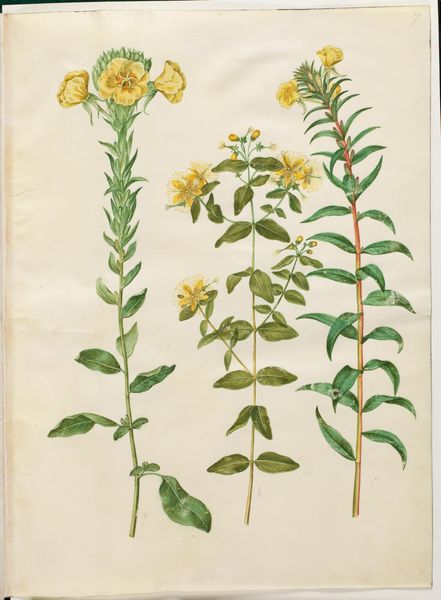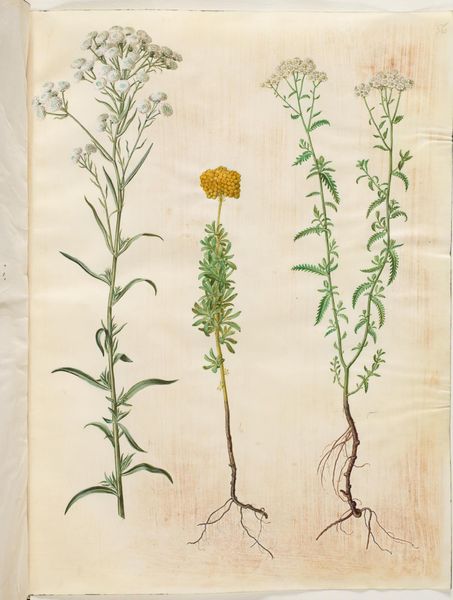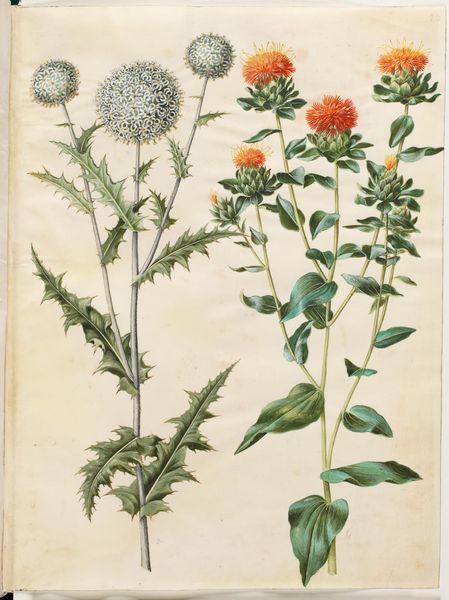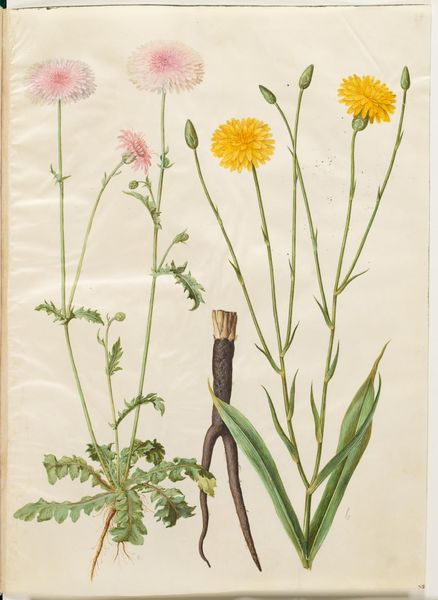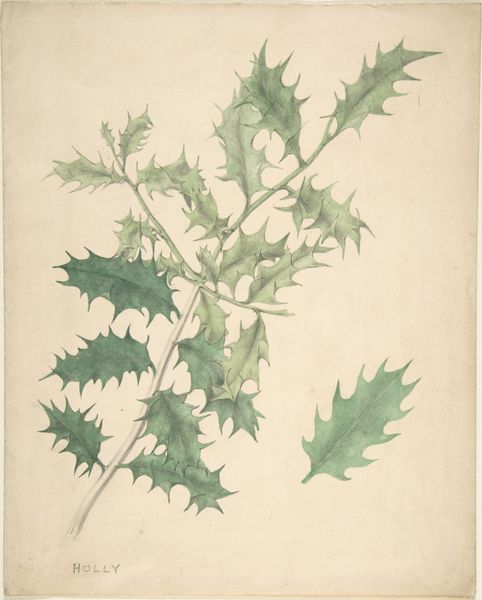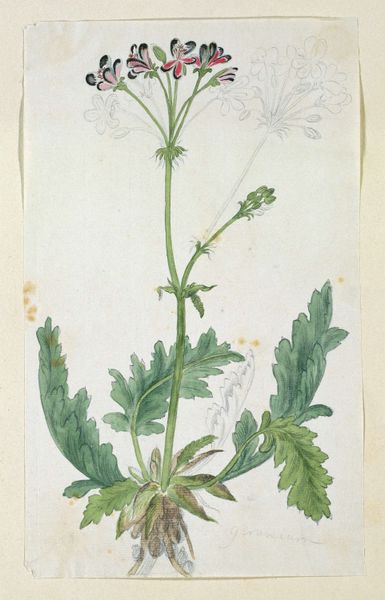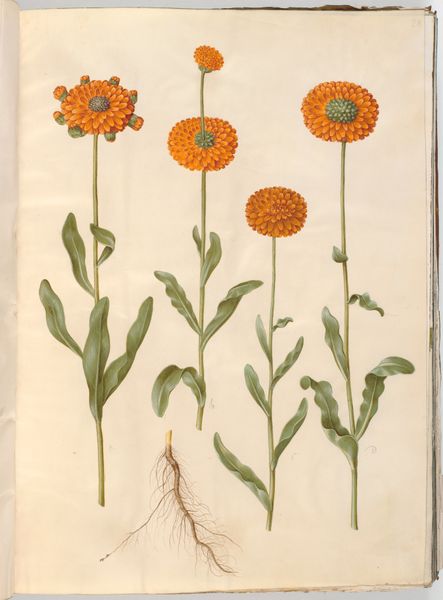
Scolymus hispanicus (spansk guldtidsel) 1649 - 1659
0:00
0:00
drawing, coloured-pencil, gouache, watercolor
#
drawing
#
coloured-pencil
#
water colours
#
dutch-golden-age
#
gouache
#
watercolor
#
coloured pencil
#
botanical drawing
#
botanical art
#
watercolor
Dimensions: 505 mm (height) x 385 mm (width) (bladmaal)
Curator: We're looking at a striking botanical study titled "Scolymus hispanicus (spansk guldtidsel)" – that’s Spanish golden thistle, for those of us who don’t speak Danish – by Hans Simon Holtzbecker. It was rendered sometime between 1649 and 1659 and resides at the SMK, the Statens Museum for Kunst. Editor: Wow, spiky! My first thought is: ouch. It's quite imposing, even intimidating. The way those thorns practically leap off the page is... aggressive? Though those little golden flowers are sweet, like tiny suns promising warmth amidst the prickles. Curator: The plant’s aggressive presentation speaks to its resilience. Consider its context – a period of immense social upheaval across Europe, and, naturally, this artist had their particular role within it. Holtzbecker's attention to the intricate details—down to each individual thorn and vein—suggests an act of almost defiant observation, an engagement with systems that both protect and restrict growth, similar to a lot of what impacted European political environments in those years. Editor: Defiant, I like that! It's interesting to think about a flower – traditionally symbolic of fragility and beauty – depicted with such armored intensity. Almost as if Holtzbecker is saying, “Don’t underestimate the power of something that looks delicate.” Plus, there’s something raw about the application of the watercolor. The drawing has aged well. The color saturation feels vibrant; I wonder about the paper’s history. Curator: Absolutely. And, of course, consider the tradition of botanical illustration itself. In a period of burgeoning scientific exploration, it was instrumental. Each drawing contributed data about plants, expanding understanding and the reach of systems we now consider endemic in areas subjected to early colonial powers. I mean, plants are so integral to narratives about identity, access to food, to power... The Dutch Golden Age becomes ever so much more legible through the lens of their still lifes and detailed garden drawings. Editor: Thinking about it all, this botanical art somehow touches upon themes of resistance and enduring strength found in unexpected places. The golden thistle – spiky exterior, golden heart. Thanks for shedding light on its context. It’s certainly changed my perspective! Curator: Thank you, and thinking together opens our minds and the possibilities with art.
Comments
No comments
Be the first to comment and join the conversation on the ultimate creative platform.
